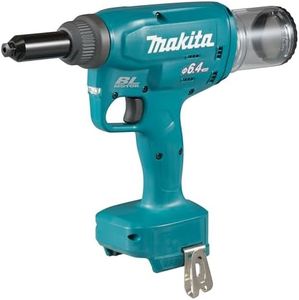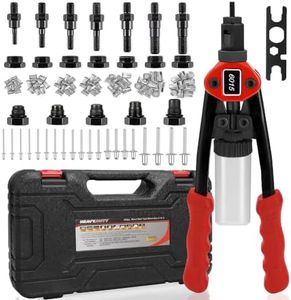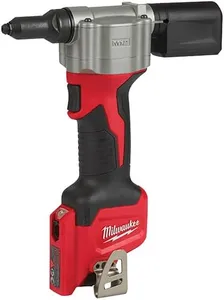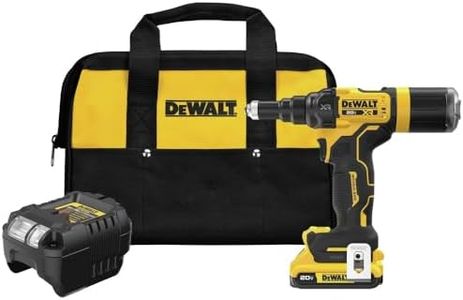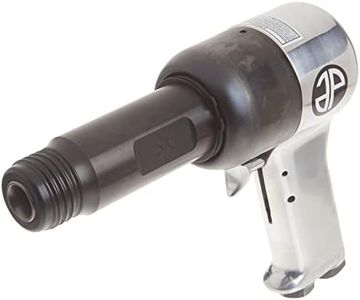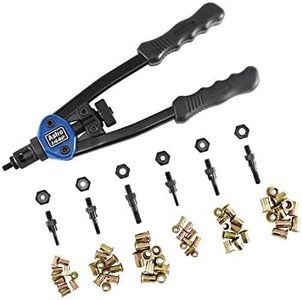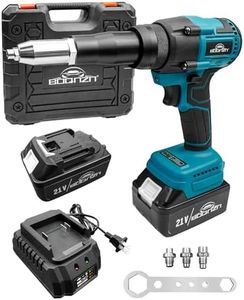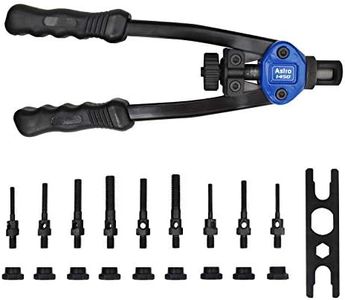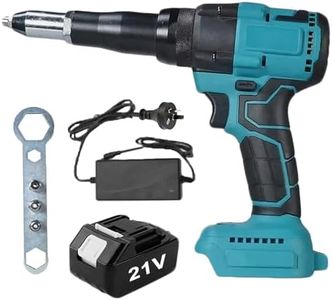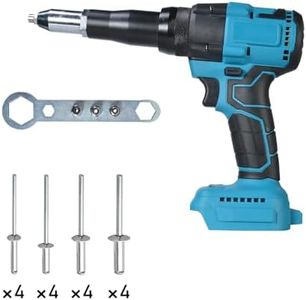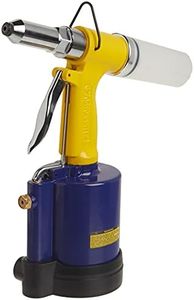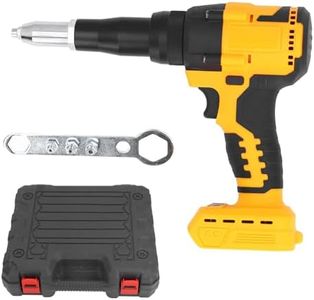We Use CookiesWe use cookies to enhance the security, performance,
functionality and for analytical and promotional activities. By continuing to browse this site you
are agreeing to our privacy policy
10 Best Rivet Guns
From leading brands and best sellers available on the web.Buying Guide for the Best Rivet Guns
When choosing a rivet gun, it's important to think about the types of projects you plan to tackle and the kinds of materials you’ll be working with. Rivet guns, also known as riveters, are essential tools for joining pieces of metal or other materials together with rivets. The right tool can make your work faster, easier, and more reliable, but picking the best rivet gun depends on understanding the key features that match your needs.Rivet Gun TypeRivet guns come in manual, pneumatic (air-powered), and electric versions. This refers to the method the tool uses to set (install) the rivet. Manual rivet guns use hand force, which makes them simple and portable, but best for small projects or occasional use. Pneumatic rivet guns use compressed air to do the job, which means less physical effort and faster work—these are great for frequent use or large projects. Electric rivet guns are powered by electricity or batteries, offering convenience and ease of use with no need for an air compressor. To pick the right type for you, think about how often you’ll use the rivet gun, whether you need portability, and if you'll be working with a lot of rivets in a short time.
Rivet Size CompatibilityThis refers to the different sizes of rivets the gun can handle (usually described in inches or millimeters, such as 3/32”, 1/8”, etc.). Some rivet guns only fit a few sizes, while others can handle a wider range. It's an important factor because using the wrong size gun with your rivet can lead to poor connections or tool damage. If you already know what rivet sizes your projects require, make sure the tool you choose fits those. For general home or automotive work, having a rivet gun that handles several common sizes is usually best.
Material CompatibilityDifferent rivet guns are designed to handle different materials, such as aluminum, steel, or stainless steel rivets. This matters because some guns may not be strong enough to set harder, tougher rivets (like stainless steel) and could break or jam. If you plan on working with harder materials, choose a gun designed with stronger parts, often labeled as heavy-duty. If you will be working mostly with softer materials, a standard rivet gun should be fine.
Ergonomics and WeightThe design and weight of the rivet gun affect how comfortable it is to use, especially for longer jobs. A lightweight and well-balanced gun reduces hand fatigue and makes controlling it easier. Ergonomic handles minimize discomfort and help you work more efficiently. If you expect to use the tool for extended periods or have smaller hands, prioritize a lighter and more comfortable design.
Nosepiece OptionsNosepieces are the parts that hold the rivet in place before installation, and different nosepieces fit different rivet sizes. Many rivet guns come with interchangeable nosepieces, allowing you to switch between rivet sizes easily. Having several nosepiece options increases the tool’s versatility. If your projects use a variety of rivet sizes, look for a gun that offers multiple nosepieces and stores them conveniently.
Ease of MaintenanceSome rivet guns are easier to keep clean and working properly than others. Features like accessible jaws (the gripping parts), easy-to-clean vents (for pneumatic types), or simple construction make the tool last longer and perform better. If you do a lot of work or plan to use your rivet gun over many years, pick a model known for easy maintenance so you spend less time fixing and more time working.
